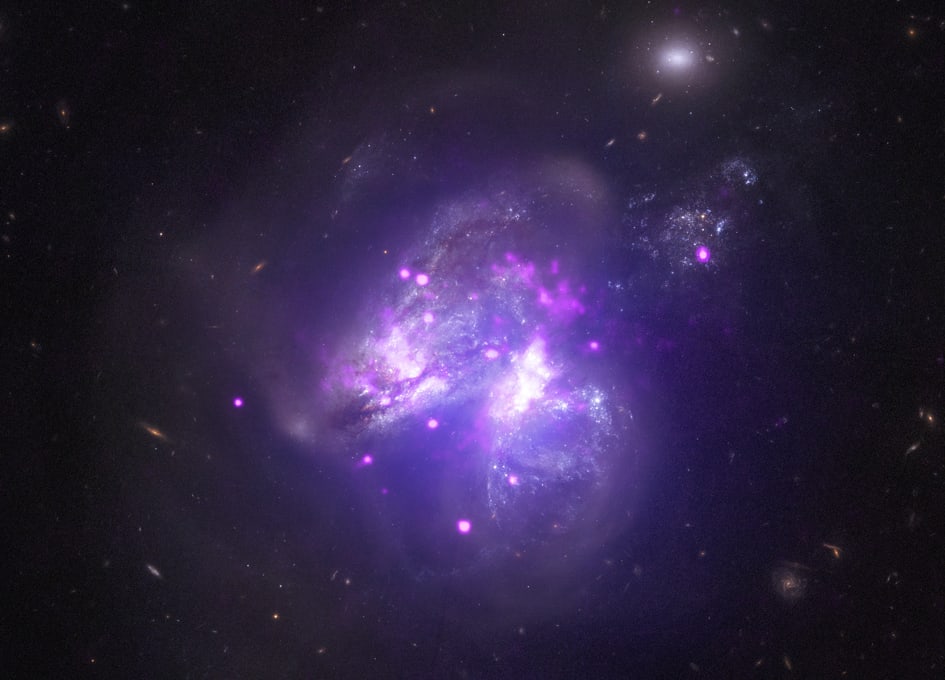The Cosmos with Arp 299
Arp 299 is a system located about 140 million light years from Earth. It contains two galaxies that are merging, creating a partially blended mix of stars from each galaxy in the process. However, this stellar mix is not the only ingredient. New data from Chandra reveals 25 bright X-ray sources sprinkled throughout the Arp 299 concoction. Fourteen of these sources are such strong emitters of X-rays that astronomers categorize them as “ultra-luminous X-ray sources,” or ULXs.
Arp 299 (parts of it are also known as IC 694 and NGC 3690) is a pair of colliding galaxies approximately 134 million light-years away in the constellation Ursa Major. Both of the galaxies involved in the collision are barred irregular galaxies. It is not completely clear which object is historically called IC 694. According to some sources, the small appendage more than an arcminute northwest of the main pair is actually IC 694, not the primary (eastern) companion.
The interaction of the two galaxies in Arp 299 produced young powerful starburst regions similar to those seen in II Zw 96. Eight supernovaehave been detected in Arp 299: SN 1992bu, SN 1993G, SN 1998T, SN 1999D were observed in NGC 3690 while SN 1990al, SN 2005U, SN2010O and SN2010P were observed in IC 694.
